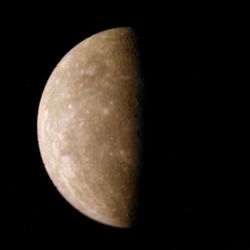Difference between revisions of "Translations:AY Honors/Stars/Planet characteristics/1/es"
From Pathfinder Wiki
(Created page with "</noinclude> Urano y Neptuno no se pueden ver a simple vista. Mercurio y Venus sólo se ven cerca de las horas del amanecer y la puesta de sol, ya que están más cerca del so...") |
m (FuzzyBot moved page Translations:Adventist Youth Honors Answer Book/Stars/Planet characteristics/1/es to Translations:AY Honors/Stars/Planet characteristics/1/es without leaving a redirect: Part of translatable page "Adventist Youth Honors Answer Book/Stars/Planet characteristics") |
Latest revision as of 22:23, 8 September 2021
Urano y Neptuno no se pueden ver a simple vista. Mercurio y Venus sólo se ven cerca de las horas del amanecer y la puesta de sol, ya que están más cerca del sol que la tierra.
Mercurio
Mercurio es el planeta más cercano al Sol. Orbita el sol una vez cada 88 días terrestres. Mercurio tiene poca atmósfera, ya que su gravedad es tan débil debido a su pequeño tamaño. Al igual que la Luna, la falta de una atmósfera de Mercurio significa que es golpeado con frecuencia por otros objetos, dejando su superficie llena de cráteres. Si tuviera una atmósfera más densa, estos objetos se quemarían antes de llegar a la superficie. Otra similitud entre Mercurio y la Luna es que el día de Mercurio es igual a su año en 88 días.

